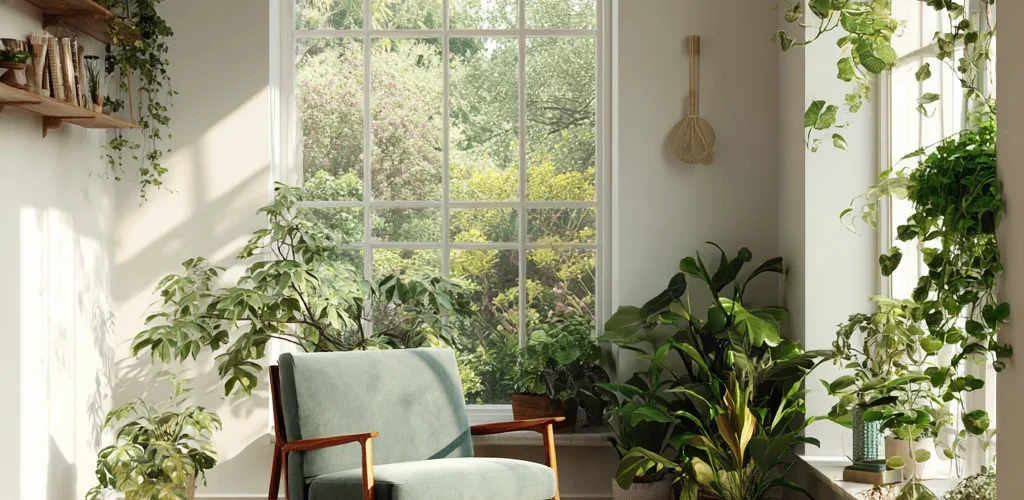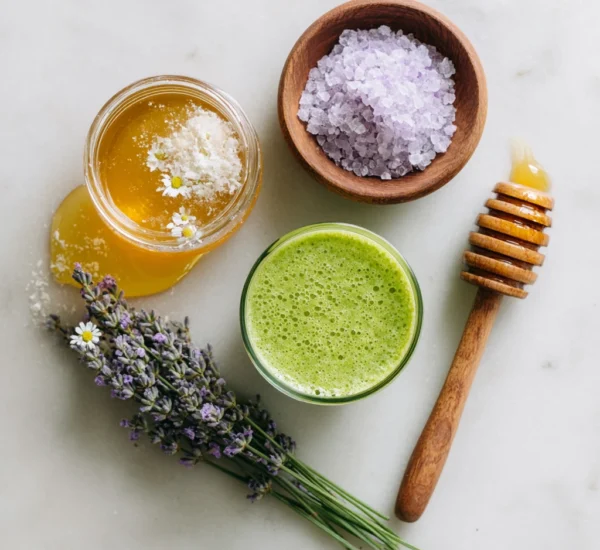Simple Ways to Bring Nature Indoors
Bringing elements of the outdoors inside can transform your living space, boosting your mood, productivity, and overall well-being. Connecting with nature, even in a small way, offers numerous benefits, from reducing stress to improving air quality. This guide explores simple yet effective methods to infuse your home with the tranquility and vibrancy of the natural world.
The Benefits of Indoor Nature
Before diving into the how-to, understanding why bringing nature indoors is beneficial is key. Studies have shown that indoor plants can purify the air, removing harmful toxins and increasing humidity. This creates a healthier environment, especially during dry winter months.
Beyond air quality, incorporating natural elements can significantly impact mental health. Greenery has been linked to reduced stress levels, improved concentration, and increased feelings of calmness and happiness. Biophilic design, which emphasizes connecting with nature, suggests that our innate affinity for the natural world can enhance our living spaces. A simple view of trees through a window or the presence of a houseplant can contribute to a more relaxed and productive home environment. Sunlight helps maintain your circadian rhythm and increases vitamin D in your body, so bring some of this natural resource into your house.
Aesthetics also play a crucial role. Natural elements add visual interest, texture, and color to your home decor. Whether it’s a striking houseplant, a collection of seashells, or a piece of driftwood, natural accents can create a sense of harmony and connection to the environment.
Incorporating Plants into Your Home
Plants are perhaps the most obvious and effective way to bring nature indoors. However, choosing the right plants for your space and lifestyle is crucial for success.
Selecting the Right Plants
Consider the amount of light your home receives. Some plants thrive in bright, direct sunlight, while others prefer low-light conditions. Low-maintenance options such as snake plants, spider plants, and ZZ plants are ideal for beginners or those with busy schedules. For brighter spaces, consider succulents, cacti, or herbs like rosemary and basil.
Also, think about the size and shape of your plants. A large fiddle-leaf fig can make a statement in a living room, while smaller succulents are perfect for desks or shelves. Vertical gardens or hanging planters can maximize space and add visual interest to walls.
Plant Care Essentials
Proper plant care is essential for keeping your indoor greenery thriving. Research the specific needs of each plant, including watering frequency, soil type, and fertilization requirements. Overwatering is a common mistake, so ensure your pots have drainage holes and allow the soil to dry slightly between waterings.
Regularly dust plant leaves to ensure they can effectively absorb sunlight. Prune dead or yellowing leaves to encourage healthy growth. Consider using a plant-specific fertilizer during the growing season to provide essential nutrients.
Creative Plant Displays
Don’t limit yourself to traditional pots. Get creative with your plant displays by using macrame hangers, vintage containers, or repurposed items like teacups or mason jars. Group plants together to create a miniature indoor garden. Consider creating a terrarium, a self-contained ecosystem that requires minimal maintenance. Think about adding some vibrant flowers to your decor.
Utilizing Natural Materials and Textures
Beyond plants, incorporating natural materials and textures can further enhance your connection with the outdoors. These elements add warmth, depth, and a sense of grounding to your living space.
Wood Accents
Wood is a versatile material that can be used in a variety of ways to bring nature indoors. Opt for wooden furniture, flooring, or accent pieces like bowls, trays, or picture frames. Reclaimed wood adds character and a rustic touch. Consider using wooden branches or logs as decorative elements.
Stone and Minerals
Stone and minerals can add a sense of grounding and stability to your decor. Incorporate stone countertops, tiles, or decorative stones in vases or bowls. Crystals and minerals can also add a touch of natural beauty and positive energy to your space.
Natural Fabrics
Choose natural fabrics like cotton, linen, wool, and silk for your upholstery, curtains, and bedding. These materials are breathable, comfortable, and eco-friendly. Incorporate textured throws, pillows, and rugs to add warmth and visual interest.
Incorporate Water Features
Water features, even small ones, bring a soothing effect to any space. A small indoor fountain or a fish tank can create a calming atmosphere. The sound of running water can mask distracting noises and promote relaxation. Make sure to maintain your water feature well to avoid mold.
Maximizing Natural Light and Ventilation
Natural light and fresh air are essential for both physical and mental well-being. Maximize these resources to create a brighter, healthier, and more inviting indoor environment.
Optimizing Natural Light
Open curtains and blinds during the day to let in as much natural light as possible. Position furniture strategically to avoid blocking windows. Use mirrors to reflect light and brighten dark corners. Consider adding skylights or larger windows to increase natural light if possible.
Enhancing Ventilation
Open windows regularly to circulate fresh air and remove stale air. Use fans to improve airflow and prevent stagnant air. Consider investing in an air purifier to remove allergens and pollutants. Place plants near windows to help filter the air.
Light Bulbs
Choosing the correct light bulbs can make a difference. Use “daylight” bulbs to imitate the natural sunlight more closely.
Bringing the Senses to Life
Engage all five senses to fully immerse yourself in nature indoors. Incorporate elements that appeal to sight, sound, smell, taste, and touch.
Visual Appeal
Create a visually appealing environment by incorporating greenery, natural materials, and calming colors. Arrange plants and natural elements in aesthetically pleasing ways. Display artwork that depicts nature scenes or landscapes.
Auditory Experiences
Introduce natural sounds into your home through music, soundscapes, or water features. Play recordings of birdsong, rain, or ocean waves. Consider using a white noise machine to mask distracting sounds and promote relaxation.
Aromatic Elements
Use essential oils, scented candles, or incense to infuse your home with natural fragrances. Choose scents like lavender, eucalyptus, or pine to create a calming and refreshing atmosphere. Place fresh flowers or herbs in vases to add natural fragrance.
Textural Variety
Incorporate a variety of textures to stimulate the sense of touch. Use soft blankets, textured pillows, and woven rugs. Add natural materials like wood, stone, and shells for tactile interest.
Taste of Nature
Grow herbs indoors for fresh, flavorful ingredients. Use edible flowers to garnish salads or desserts. Enjoy a cup of herbal tea made with fresh herbs.
FAQ Section
What are the easiest indoor plants to care for?
Snake plants, spider plants, ZZ plants, and succulents are all relatively low-maintenance and forgiving options.
How can I improve air quality in my home naturally?
Indoor plants such as snake plants, spider plants, and peace lilies can help filter the air. Opening windows regularly to ventilate your home and using an air purifier can also improve air quality.
What are some inexpensive ways to bring nature indoors?
Collecting rocks, shells, or branches from nature walks, using thrifted or repurposed containers for plants, and propagating new plants from existing ones are all budget-friendly options.
How can I create a calming atmosphere in my home?
Incorporate natural light, plants, soothing colors, soft textures, and natural sounds such as running water or nature soundscapes to create a calming atmosphere.
What are the benefits of having plants in my home?
Plants can improve air quality, reduce stress levels, increase productivity, and add visual interest to your home decor. They can also create a more relaxing and inviting atmosphere.



